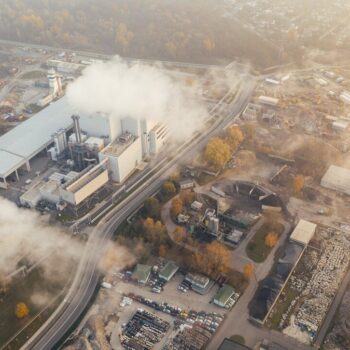After a lost decade, the conversation on carbon capture and storage (CCS) or use (CCU) has reignited in the EU. These technologies provide abatement options for certain industrial emissions and, perhaps most importantly, could enable “negative emissions”. A policy framework, based on a robust set of guiding principles and safeguards, is needed to facilitate the deployment of high-value carbon capture at scale by 2030.
Deployment should prioritise high-value applications, while also implementing guardrails to prevent misuse. These are necessary to overcome concerns that CCS and CCU could enable the continued, unabated use of fossil fuels.
The EU can enshrine robust safeguards and principles, via a value hierarchy, in a carbon capture strategy. This EU framework should provide conceptual clarity and focus on facilitating storage availability rather than on setting carbon capture targets. The EU must also act on joint infrastructure planning, improve the business case for projects, and establish monitoring, standards, and certification mechanisms. Member states have a complementary part to play, especially in enabling project development and in addressing social acceptance issues.
Moreover, industrial emitters themselves must take a central role in progressing the carbon capture landscape. They have to contribute their fair share to the costs of CCS to ensure that the public sector does not face undue financial burdens for infrastructure development. Lastly, the polluter-pays principle must be at the heart of the deployment of carbon capture projects.
Guiding principles for carbon capture deployment
We propose a set of overarching principles to help mitigate the risks and concerns associated with CCS (and CCU) that can form the foundations of a carbon capture strategy for the EU.
- Focus explicitly on delivering climate neutrality.
- Consider CCS only after other decarbonisation options, not as a default.
- Target support where it will provide the most added value
The role of the EU in deploying carbon capture
The EU needs to learn from past mistakes and take action to advance the deployment of CCS within this decade. EU action is therefore key in four main areas.
- High-level strategic leadership.
- Coordination on infrastructure development and network planning.
- Supporting the business case of projects.
- Regulations, standards, and certification mechanisms.
The role of member states
EU-level action alone is not sufficient to enable deployment of CCS (and CCU) as viable decarbonisation options. Complementary national policies are necessary, but the level of political buy-in and appetite for CCS policy varies widely across countries. While acknowledging these differences, member states could:
- Clearly establish the strategic role and desirability of CCS as part of their National Energy and Climate Plans (NECPs)
- Design state aid schemes in the form of tax breaks, direct funding, or other de-risking instruments.
- Address social acceptability concerns relating to projects.
- Map the geological CO2 storage potential and test the technical properties of suitable formations.
The role of companies
Industrial emitters also have a critical role in the deployment of carbon capture applications and their scale-up. Companies should:
- Align their activities to facilitate permanent storage of captured CO2 from industrial installations.
- Take responsibility for their liabilities when outlining the business case for carbon capture projects.
- Demonstrate the greatest degree of sustainable corporate due diligence when conducting CCS activities throughout the entire value chain.


